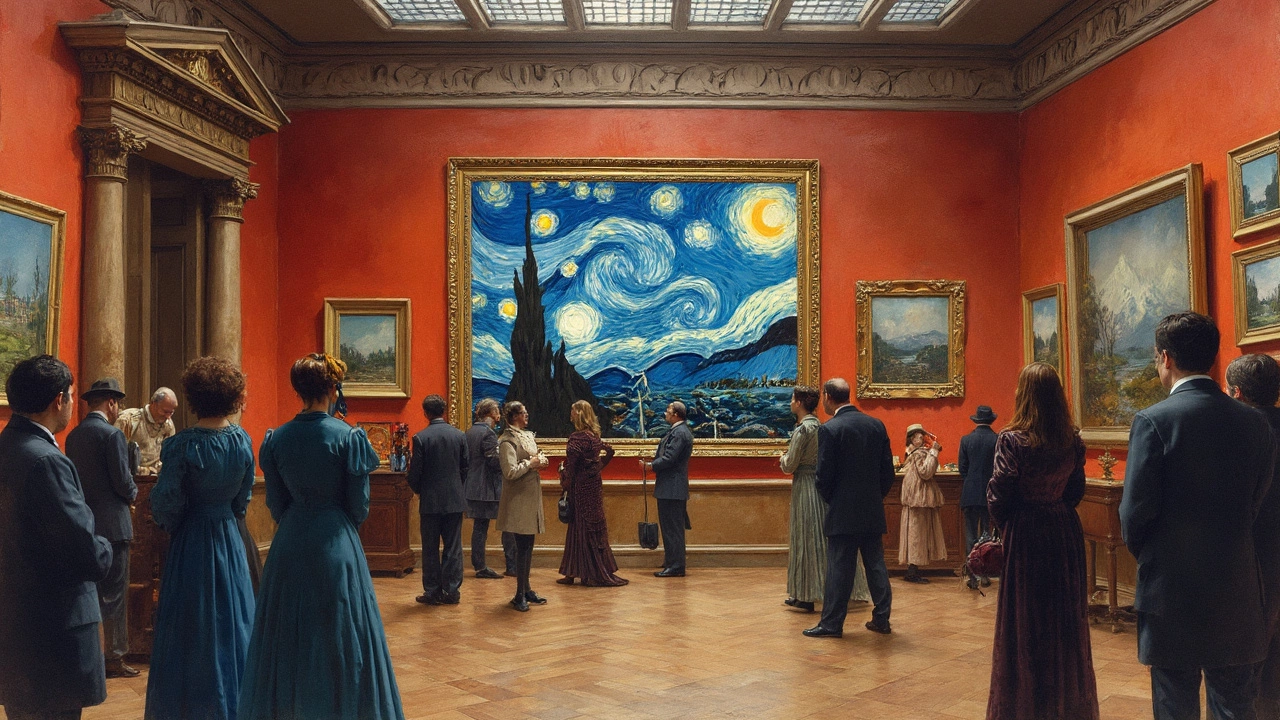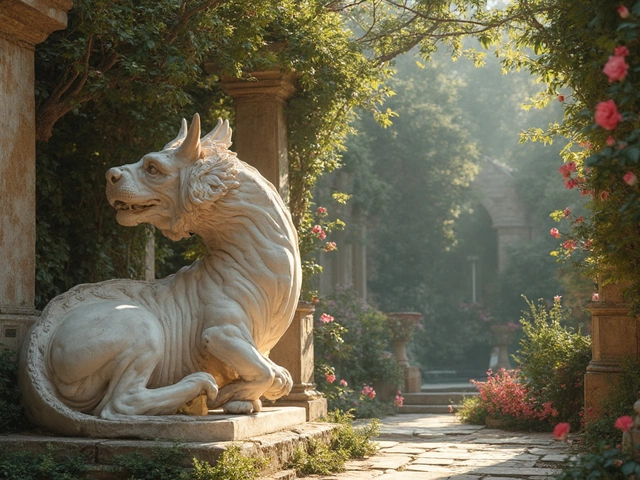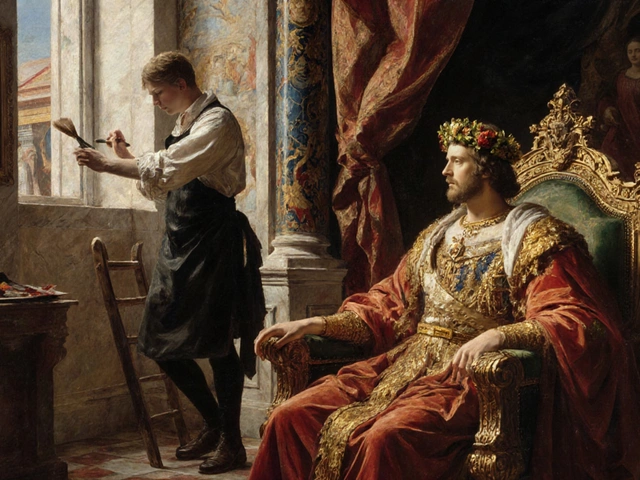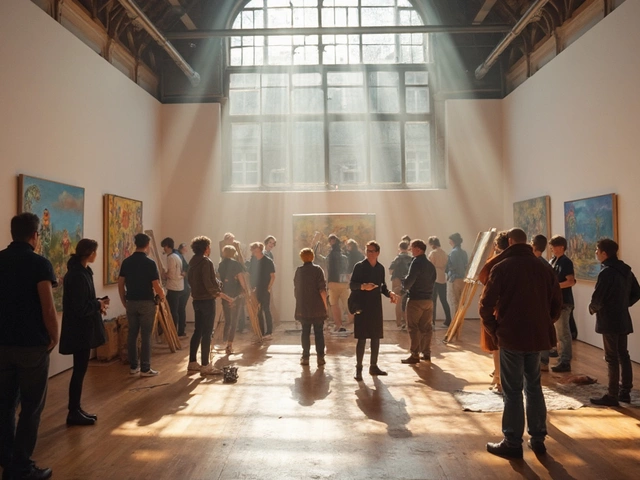Alright, so you've seen 'Starry Night'—the swirling stars, the moonlit night sky, the tiny village under the dreamlike glow. You've probably even seen it on everything from mugs to mousepads. But is it modern art? Well, it might not be as straightforward as you think.
Modern art usually kicks off with the industrial revolution and the rise of urban culture—think the late 19th to early 20th century. Does 'Starry Night' fit the bill? Created in 1889 by Vincent Van Gogh during his stay at an asylum in Saint-Rémy-de-Provence, this painting lands right in the middle of that timeline.
But what really makes something modern art? It’s the breakaway from tradition, the experimentation with new perspectives, and an expression of contemporary life. As for Van Gogh, he was all about those new perspectives, bending traditional rules with his bold colors and emotional intensity.
- What Defines Modern Art?
- A Shortcut through Van Gogh's Life
- Starry Night: A Product of Its Time
- Elements That Make It Modern
- How It Influences Artists Today
- Why Its Modern Legacy Endures
What Defines Modern Art?
Modern art is like that moment when you finally decide to break free from the norm and try something daring. It's not just about the colors or shapes; it's about the mindset. We're talking about an era where artists decided enough was enough with the same-old, same-old that dominated centuries.
When we say modern art, we're focusing on a specific chunk of time: roughly from the 1860s to the 1970s. The period saw a revolution in artistic expression—a response to industrialization, urbanization, and changes in society. Van Gogh and the Impressionists, for example, pushed art through new doors, emphasizing individual perspective over traditionally accepted norms.
The Birth of Something New
Modern artists felt inspired by a fast-changing world. They gravitated toward themes like nature, society, and the human condition but with a fresh twist. They ditched the detailed realism of Renaissance art and started painting what they felt, not just what they saw.
Key Features
- Experimentation: Artists fiddled with new techniques like pointillism, abstraction, and surrealism. Every canvas was like a playground for exploration.
- Rejection of Tradition: Rules? What rules? Speed and emotion started to dictate style more than formal training.
- Personal Expression: It's where art became more autobiographical, as artists like Van Gogh painted their emotions onto the canvas.
Modern art might look simple on the surface, but every brushstroke screams of the artist's urge to depict more than the eye can see.
A Shortcut through Van Gogh's Life
Vincent Van Gogh's story isn't just about painting; it's like a rollercoaster ride through the art world of the late 1800s. Born in the Netherlands in 1853, Van Gogh wasn't a child prodigy artist. In fact, his first career choice was to become a preacher like his father, but that didn’t quite pan out.
Imagine struggling through different jobs and regions: that was Van Gogh in his 20s, dabbling in art dealing, teaching, and even serving as a missionary. It wasn’t until his late 20s—yes, late bloomer alert—that he really threw himself into art. It was his brother Theo, an art dealer living in Paris, who said, 'Hey, why not give art a shot?' He listened, and thank goodness he did.
Van Gogh wasn’t rooted in one place or style. He bounced around Europe, drawing inspiration everywhere he went—Paris, Arles, Saint-Rémy, and Auvers-sur-Oise. In Paris, he rubbed elbows with future giants of Modern Art like Paul Gauguin and Émile Bernard. That’s when his style got a major upgrade, moving from dark Earth tones to those bright, expressive colors we all know and love.
Wrestling With Challenges
Don’t get it twisted, though. The man had his fair share of struggles, including lifelong mental health issues. His notorious breakdown in Arles was when he cut off part of his ear. Ouch, right? But even amid turmoil, he created approximately 2,100 artworks in just over a decade. That's a seriously mind-blowing stat.
His post-impressionist style—characterized by emotional depth, vivid colors, and bold brushwork—didn’t get much love during his life. Tragically, he died by suicide at just 37, in 1890. His contribution wasn’t fully appreciated until after his death, putting him in the bittersweet hall of artists who gained fame posthumously.
His legacy? Massive. Many see his influence in both the Modern Art movement and our present-day appreciation of art. His life story adds layers and context to pieces like Starry Night and helps explain why we're still so fascinated by his work today.
Starry Night: A Product of Its Time
So, what was happening around 1889 when Van Gogh painted his famous Starry Night? Well, it turns out quite a lot was going on in the world of art and beyond. This painting didn't just pop into existence in isolation. It came to life during a time of significant change and evolution.
For starters, society itself was shifting. The industrial revolution had fundamentally changed how people lived, moving them into bustling cities and forging new lifestyles. This era was brimming with technological advancements—railways, factories, and even the birth of the electric light. Such a backdrop offered artists like Van Gogh fresh inspiration and methods of expression.
Impressionism's Influence
Before Van Gogh, artists were heavily into Impressionism. Think Monet and his obsession with light and color. Although Van Gogh wasn’t an Impressionist in the traditional sense, he borrowed their love for vibrant hues and attention to lighting nuances. What makes Starry Night stand out are those exaggerated swirls and the emotional intensity that breaks the mold.
Post-Impressionism Takes Hold
Post-Impressionism, where Van Gogh sits comfortably, is basically Impressionism's more emotional and expressive sibling. These artists wanted to inject more meaning and emotion into their work. This is evident in 'Starry Night', with its swirling patterns that seem to move with a life of their own.
Personal Context
Let’s not forget Van Gogh’s personal story. The year he painted this masterpiece, he was at the Saint-Paul asylum. The work reflects a mix of his inner turmoil and hope, something many believe makes it powerful. It’s like a window into his soul during a challenging time.
In essence, 'Starry Night' is tagged as modern because it bridges the gap between strictly academic art and the boundary-pushing works that followed. It’s a vivid snapshot of time when artists were redefining the canvas, quite literally and figuratively.
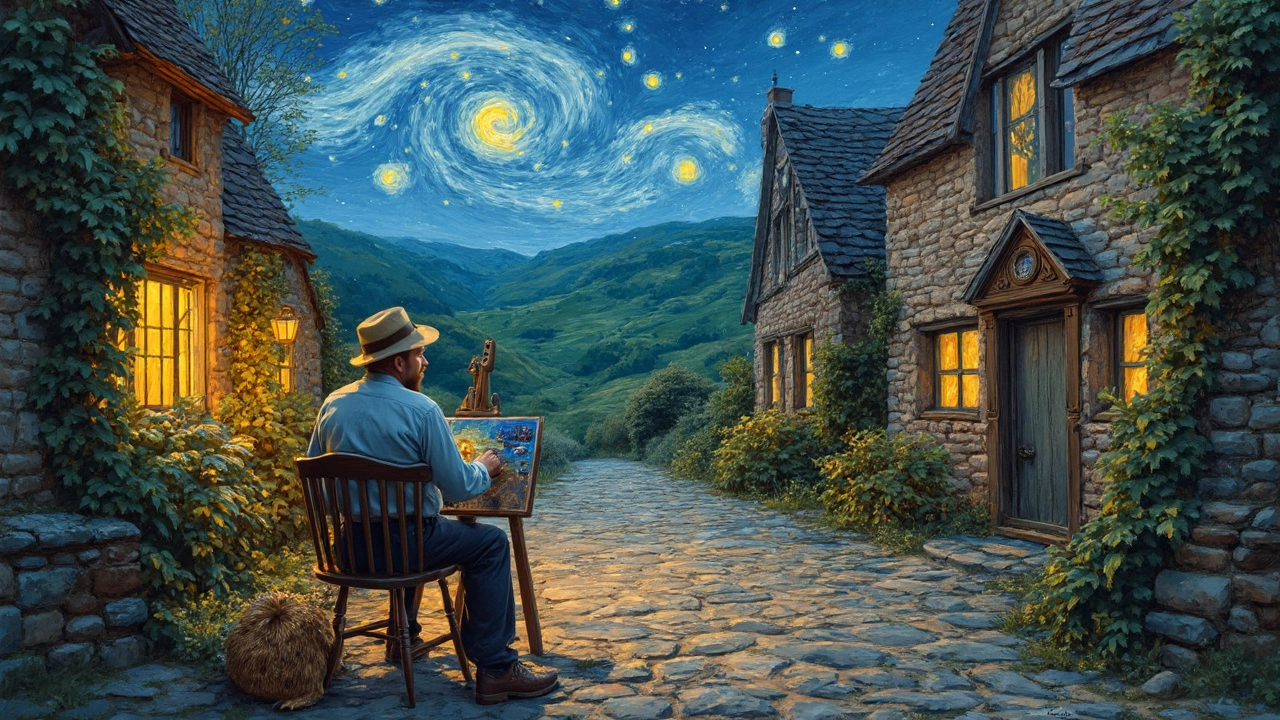
Elements That Make It Modern
Alright, let's break it down a bit. Ever wondered what makes 'Starry Night' stand out as part of the modern art scene? It's all about the elements that challenge the norm. First up, Van Gogh’s use of color. He wasn't shy about using bold and contrasting colors to evoke emotion, something pretty groundbreaking back in the day.
The Bold Use of Color
Van Gogh took color to a whole new level, using vibrant blues and yellows in Starry Night not just because they looked cool but because they conveyed feelings. His color palette was his way of expressing what he felt, a big part of what we now recognize as modern art. Today, artists take huge inspiration from this freedom to use color as a language.
Breaking Away from Realism
Then there's the style. Van Gogh didn't paint the sky and stars as he saw them. Instead, he swirled them into dreamy, exaggerated shapes. This move away from realistic portrayals is a hallmark of modern art, where the artist’s perspective or emotional response takes the front seat.
Emotional Expression
Let's not forget the emotional punch of Starry Night. Van Gogh’s expressive brushwork and dynamic composition break away from the rigidity of traditional art forms. He wasn't just painting a scene; he was conveying what it meant to him.
So, in a nutshell, 'Starry Night' ticks off the boxes for modern art with its gutsy color use, departure from realism, and raw emotional expression. These elements not only place it firmly in the modern camp but also keep it fresh and relevant for today's artists.
How It Influences Artists Today
Ever stare at a piece of art and thought it felt a bit 'Van Gogh-y'? You're not alone. Van Gogh's Starry Night is more than just a standout piece in art history; it’s a cornerstone for many modern artists looking for inspiration.
One reason it continues to resonate is Van Gogh’s raw emotional expression. His approach to color and brushwork was groundbreaking. Instead of recreating what he saw, he painted how he felt—an idea that artists today still latch onto. Many contemporary painters, like David Hockney and Yayoi Kusama, talk about how Van Gogh’s vivid use of color and unique perspectives have impacted their work.
Breaking the Rules
Van Gogh tossed traditional techniques out the window, a move echoed by today’s modern artists who are always pushing boundaries. You know those unconventional works that make you rethink what art really is? Van Gogh is a huge influence there.
Color and Emotion
Think about all the modern art that uses bold, even clashing colors to convey feelings. That’s a trademark of modern art stemming from pieces like Starry Night. The deliberate yet seemingly chaotic use of color leaves a huge impact, making it a crucial study for artists today.
And despite being over a century old, Starry Night is still relevant, showing up in murals and digital art as artists blend Van Gogh’s iconic elements into new forms. The influence is so broad that it even crosses into virtual spaces, with replicas appearing in virtual reality exhibitions.
So next time you see a star-filled sky in a painting and feel a little déjà vu, you'll know exactly who to credit. It's amazing how a night back in 1889 continues to spark creativity worldwide.
Why Its Modern Legacy Endures
So, why does Starry Night still capture imaginations and hold a firm place in modern art discussions? It's a mix of the artist's personal story, the artwork's emotional depth, and its influence on what's come after.
The Personal Touch
Van Gogh created 'Starry Night' during a turbulent time in his life, and that raw emotion is quite literally painted into the canvas. You can feel the intensity and the chaos, which is something not often seen in the art beforehand. The painting speaks volumes about the human experience and struggles, making it timelessly relatable.
Artistic Techniques
Look at those swirling skies and bright stars. Van Gogh's unique brushstrokes and vibrant colors broke away from the stiff, realistic norms of his time. This radical approach to technique set off a ripple effect of experimentation and creativity in art history. It's these very techniques that inspire modern artists to push boundaries and explore new styles.
- Color Use: Van Gogh’s dynamic use of color helps convey emotion and energy, a style adopted by countless modern artists.
- Brushwork: The bold, rhythmic brushwork impacts art styles such as Expressionism, influencing artists who focus on evoking emotion.
Lasting Influence
Even today, 'Starry Night' inspires emerging artists and is often featured in academic courses on modern art. Its presence in pop culture keeps it fresh in public consciousness, which is pretty rare for a piece that's over a century old.
| Aspect | Impact |
|---|---|
| Technique | Inspired new styles like Expressionism and Fauvism |
| Emotional Depth | Encouraged more personal and emotional expression in art |
The enduring legacy of 'Starry Night' lies in its ability to stay relevant. It reflects the vibrant pushes and pulls of modern life and art, earning its spot as a masterpiece that’s more relevant today than perhaps it was during Van Gogh's own time.
